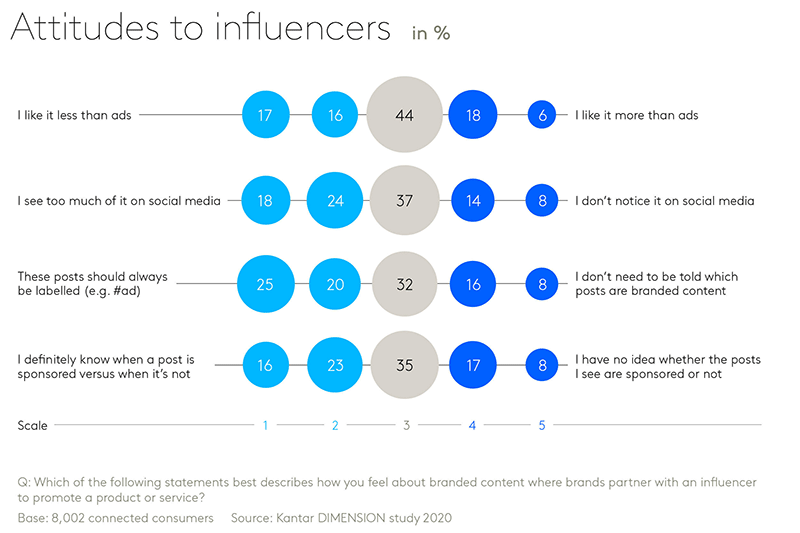The volume of influencers online continues to grow. With dedicated video channels or websites, some have built substantial followings and are seen by many brands as a trusted channel to reach and influence their target audiences.
But as the influencer channel has grown, so inevitably have the problems. Brands and organisations are now holding their influencer partners to account, expecting the same rigour and transparency as with other more established media forms.
Do consumers like influencers?
Forty-two percent of consumers agree that they see too much branded content on social media. Twenty-five percent feel strongly that such posts should be labelled in some way. This falls to 11% in China:
‘Transparency is one of the main drivers in building audiences’ trust. Consumers trust people they know, or feel they know, which explains the trust in influencers. In China, influencers are always paid – a fact that’s clear to the audience. Most are transparent with their followers about their commercial relationship with the brands or products they feature.’ Bob Wang, VP Strategy, Social & CRM, Ogilvy China

Do all brands have licence to influence?
Influencers are better suited to some product categories and industries than others. In luxury and travel categories, leaders told us that influencers and brand ambassadors are important for showcasing their products in the best possible environment. Their customers enjoy seeing these products at their best in the company of those who best ‘fit’ the brand’s values.
The circumstances in financial services are different. Consumers expect transparency and openness in every aspect of the brand’s behaviour, including how it communicates to existing and prospective customers.
Our full report here includes extracts from our interviews with Lloyds Banking Group, Swarovski, NATO, Lidl & Iberostar.
Finding the right ‘fit’
There’s no single solution. Brands vary in their requirements, often based around a set of best practices built over many years. ‘Fit’ is important. The right influencer for the brand’s values is worth more than the influencer boasting the largest audience.
Strategic communication plans need the right set of ingredients, not just the largest quantity of one ingredient. Kantar can help communication professionals identify the right ingredients for them. We can advise on how best to mix them in the right proportions to achieve the optimum result. Get in touch to find out more.


